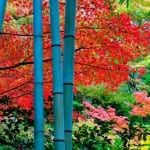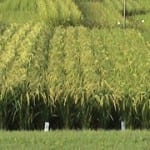I’m tellin’ ya, warm premium sake is the next big thing.
 At the end of this summer, I was a judge in perhaps the most interesting sake competition happening: the Kanzake (“Warmed Sake”) Contest. It is hosted jointly by the Sake Bunka Kenkyujo (Sake Culture Research Institute) and Slow Food Japan, and is just what it sounds like: a tasting competition for warmed and hot sake.
At the end of this summer, I was a judge in perhaps the most interesting sake competition happening: the Kanzake (“Warmed Sake”) Contest. It is hosted jointly by the Sake Bunka Kenkyujo (Sake Culture Research Institute) and Slow Food Japan, and is just what it sounds like: a tasting competition for warmed and hot sake.
There were 30 judges, and we assessed 633 sake from 223 kura. The contest reminded me of just how good warmed sake can be (OK, scratch that: I never forgot that for a moment), and made me feel that the time to promote it again has come.
There were several classifications based on price and temperature. I was judging the “reasonably priced, hot” group. Directly to our starboard was the “reasonably priced, warm” sake group. There was also the “expensive warmed sake” group and the “less than fully orthodox sake, warmed” group.
As we tasted, I was struck by how a few degrees in temperature change could make a big difference.  Since ours was the “atsukan” (i.e. hot, not warm) division, it had to be pretty hot. And it would inevitably cool down as we worked our way through each flight of several sake each. So we had to rush a bit to get through them all while we could still consider them atsukan. Easier said than done.
Since ours was the “atsukan” (i.e. hot, not warm) division, it had to be pretty hot. And it would inevitably cool down as we worked our way through each flight of several sake each. So we had to rush a bit to get through them all while we could still consider them atsukan. Easier said than done.
From time to time there were selections that were actually better when a bit cooler, down into the lukewarm range known as “nurukan.” However, we were to judge them on their merits when hotter, and so, alas, we had to ding ‘em.
So the temperature range makes a big difference.
The results are here, although the document is in Japanese.
However, more important than just which sake did well, the fact that warm sake is returning to the minds and hearts of consumers after a couple of decades of chilled-only premium sake is deliciously refreshing.
 Not just any sake can be warmed; it has to be right for it. That means it needs to have the right flavor and aroma profile. But that is not rocket science. Just taste it. If you think, “Hey, this opens up at room temperature.” then try warming it. Sake with earthy, bitter or even sweeter elements goes well warmed. Conversely, most fruity sake is not suited to warming.Yet there are lots of great ginjo that are in fact enjoyable if not better warmed.
Not just any sake can be warmed; it has to be right for it. That means it needs to have the right flavor and aroma profile. But that is not rocket science. Just taste it. If you think, “Hey, this opens up at room temperature.” then try warming it. Sake with earthy, bitter or even sweeter elements goes well warmed. Conversely, most fruity sake is not suited to warming.Yet there are lots of great ginjo that are in fact enjoyable if not better warmed.
Why do they heat sake? There are several theories, but most point to health reasons. Putting warm sake into your core when it is cold out was considered much healthier. Today, some say that warm sake is gentler on the body, but I am sure just how much you drink supersedes that. Regardless, sake has been enjoyed warm in Japan for centuries upon centuries, and it is only when ginjo started to become popular in the early 80s that chilled premium sake became so popular.
Note, sake was also sometimes enjoyed chilled long ago as well. So, not all sake was hot.
One massive misperception is that good sake is drunk cold, bad sake is drunk hot, and they heat it to hide the flaws. Poppycock.
No brewer in the history of the industry ever tasted his product and said, “Whoa. This stuff sucks. Let’s tell everyone to heat it and fool ‘em.” Never. To be sure, heating rough sake will hide the flaws. But that is not why they do it.
 Certainly, most – if not all – importers of sake know this. But almost none will promote this truth. But hey, I can actually understand that as polarizing a topic makes it easier to convey to the masses, and there is a job to do. Surely getting more and more people to at least try premium sake is a higher priority.
Certainly, most – if not all – importers of sake know this. But almost none will promote this truth. But hey, I can actually understand that as polarizing a topic makes it easier to convey to the masses, and there is a job to do. Surely getting more and more people to at least try premium sake is a higher priority.
But hey, it is nearing the time to transcend that and move on to the next level, and that is learning how good the right sake can be when warmed.
The revival of warm premium sake in Japan has led to a whole lineup of new toys. Vessels for warming sake and keeping it warm are easy to find now, as are thermometers for measuring the temperature. Just do an internet search an “sake warmers” and see what comes up.
How does one heat sake? In short, indirectly. The best way is to take the vessel into which the sake has been poured and put it into a pan or pot or kettle of just-boiled water. Do not put it in boiling water as the temperature will cause some of the alcohol to blow off and skew the flavor profile. As it warms, sip it from time to time. Keep tasting it until it is just where you want it. A microwave oven will work in a pinch, although it is admittedly not quite as good.
How hot is hot? Ah, if only it were that simple. But try it a little warmer than we are. Maybe 40C to 44C, or 105F to 113F is a good ballpark figure. Each sake will be a bit different, and each person’s preferences will be as well, so the permutations are endless.
Tokkuri (traditional sake flasks) are cool but not obligatory. The same goes for o-choko (cups). But these too are readily available via sake stores, Asian supermarkets, and the internet. Heck, a tumbler or tea cup will work in a pinch. Try it. The time has come. We gotta start somewhere.
It is not rocket science, in fact, it more art than any science.
The point here is to encourage you. If possible, start with a sake that might be recommended as suited to warming. Then learn to look for earthiness, richness and perhaps less prominent aromatics. Then branch out from there to find your preferences. Go bonzo.
Warm sake is set to make that long-awaited comeback. And remember: you heard it here first.











